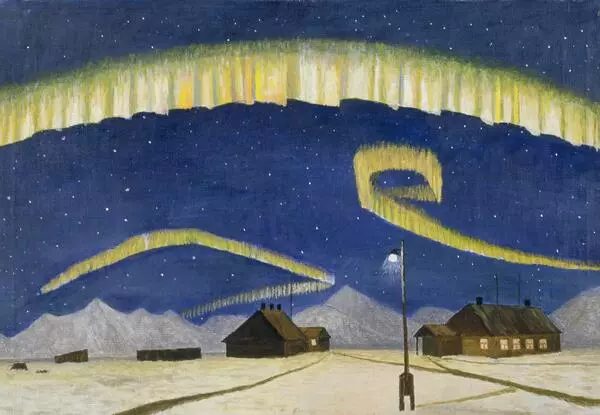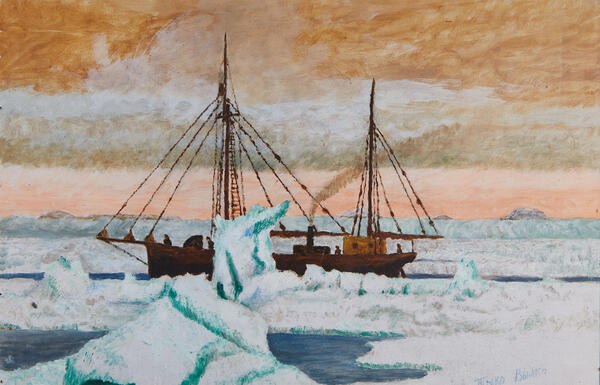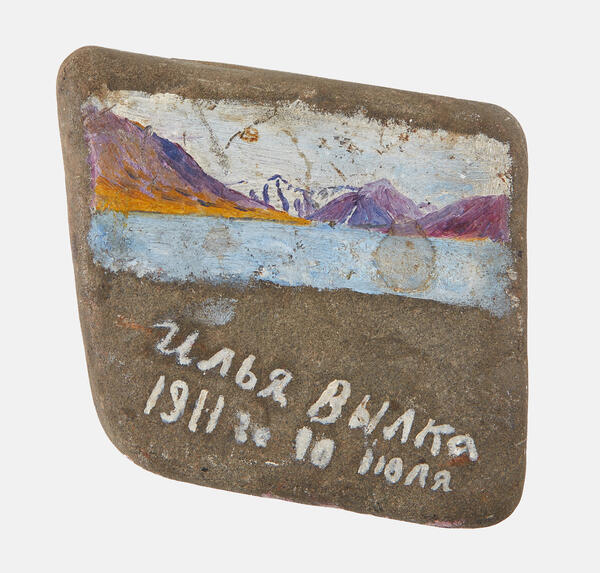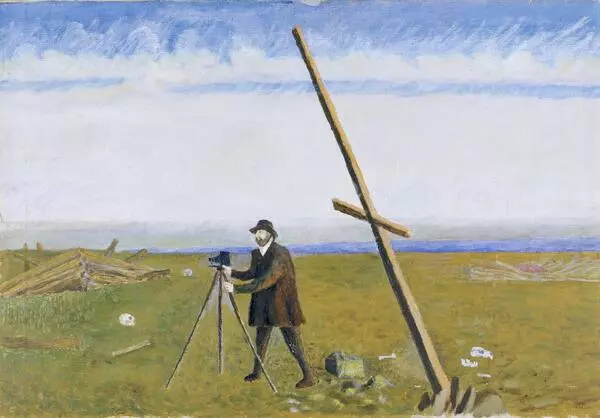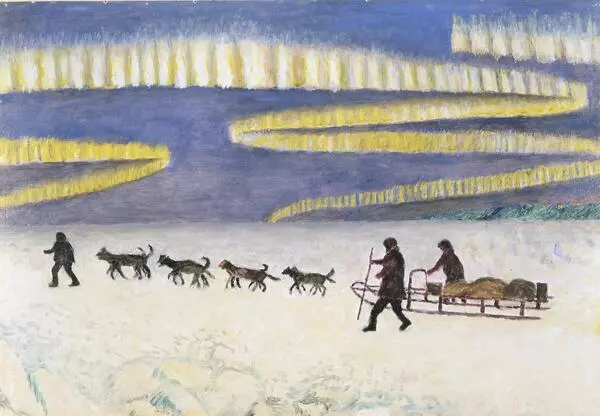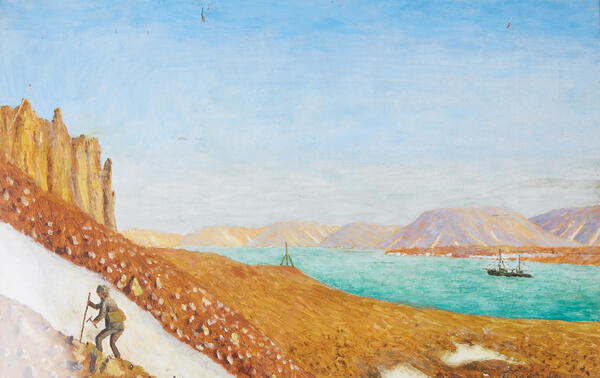The Nenets room of the Museum of the Artistic Exploration of the Arctic named after Alexander Borisov is dedicated to several painters born in the Far North. Among them is the first Nenets painter Tyko (Ilya) Vylka (1886-1960). Tyko is his Nenets name, but later he was baptized as Ilya.
Vylka was born into a family of hunters, but he made it to ‘president of Novaya Zemlya’: for thirty years, he held a position of the chairman of the Island Soviet. However, while performing his public duties, Vylka continued depicting the rapidly changing scenery of his native island.
The Far North is characterized by harsh weather conditions. The windy winter seems to last forever, the hunting luck is something people depend upon, and the ‘big world’ is almost unreachable. Originally, painting as a way to convey one’s feelings and emotions didn’t exist in Nenets culture. However, eventually some artifacts of Western civilization started incorporating into Nenets lifestyle thanks to trade and other occasional encounters with European people. Armour, tools, utensils, even books and magazines – which were not of much use to an oral society – found their way to the Far North.
Probably it was in those books and magazines that the Nenets boy Tyko first saw pictures that awoke his interest in the visual. The first artist Vylka met was Alexander Borisov, who came to Novaya Zemlya in 1896. Borisov and other explorers who came after him encouraged the young Nenets artist and provided him with paper, pencils, and paints.
The picture Seal Hunting shows an everyday scene of Nenets life. Seals are essential for the Nenets culture. Sealskin is used for two purposes: first, to make waterproof boots (that are much more durable than those made of reindeer skin, although less warm); second, and probably most important, to make belts and harnesses for sleds. Normal ropes are less suited for the purpose, because they get rotten easily in the damp weather. Sealskin belts, on the other hand, are very solid and flexible and last much longer thanks to the natural fat impregnation. Moreover, sometimes Nenets people use seal fat as food.
The works of Tyko Vylka are classified by art critics as naïve art: his paintings are simple, expressive, and sincere. Tyko’s art school was nature itself. Thanks to his diligence and power of observation, the Nenets painter managed to unravel its mystery and understand the northern beauty in its fullness.
Vylka was born into a family of hunters, but he made it to ‘president of Novaya Zemlya’: for thirty years, he held a position of the chairman of the Island Soviet. However, while performing his public duties, Vylka continued depicting the rapidly changing scenery of his native island.
The Far North is characterized by harsh weather conditions. The windy winter seems to last forever, the hunting luck is something people depend upon, and the ‘big world’ is almost unreachable. Originally, painting as a way to convey one’s feelings and emotions didn’t exist in Nenets culture. However, eventually some artifacts of Western civilization started incorporating into Nenets lifestyle thanks to trade and other occasional encounters with European people. Armour, tools, utensils, even books and magazines – which were not of much use to an oral society – found their way to the Far North.
Probably it was in those books and magazines that the Nenets boy Tyko first saw pictures that awoke his interest in the visual. The first artist Vylka met was Alexander Borisov, who came to Novaya Zemlya in 1896. Borisov and other explorers who came after him encouraged the young Nenets artist and provided him with paper, pencils, and paints.
The picture Seal Hunting shows an everyday scene of Nenets life. Seals are essential for the Nenets culture. Sealskin is used for two purposes: first, to make waterproof boots (that are much more durable than those made of reindeer skin, although less warm); second, and probably most important, to make belts and harnesses for sleds. Normal ropes are less suited for the purpose, because they get rotten easily in the damp weather. Sealskin belts, on the other hand, are very solid and flexible and last much longer thanks to the natural fat impregnation. Moreover, sometimes Nenets people use seal fat as food.
The works of Tyko Vylka are classified by art critics as naïve art: his paintings are simple, expressive, and sincere. Tyko’s art school was nature itself. Thanks to his diligence and power of observation, the Nenets painter managed to unravel its mystery and understand the northern beauty in its fullness.




